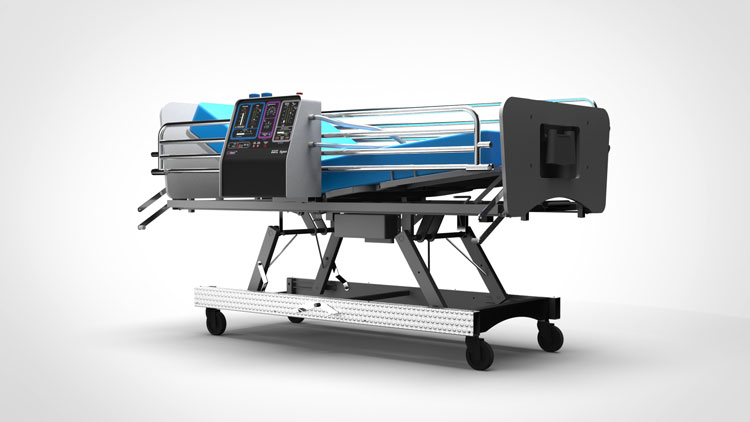Dyson designs a ventilator for the coronavirus pandemic
CoVent is the company’s response to the government’s call for manufacturers to help with the nationwide ventilator shortage.
Dyson has revealed its design for a ventilator, in an attempt to meet the shortage of the machines amid the coronavirus pandemic.
The CoVent ventilator has been designed in collaboration with the Technology Partnership, a UK-based technology company.

The design is a response to the government’s request for a design of a ventilator and its mass production. The NHS currently has 8,000 ventilators, but it is estimated the UK might need as many as 30,000 in the coming months.
Dyson says of the design brief: “The UK government requested a design for a ventilator that was safe, effective, efficient in conserving oxygen, easy to use, bed-mounted, portable and not needed a fixed air supply.”
Ventilators help patients to breathe by pumping air into their lungs, which is crucial in the treatment of COVID-19 which affects the respiratory system.
Designed with the “human factor”

According to Dyson, the user interface has been designed with a “human factor” in mind so that it “safe” and “familiar” to use by healthcare providers. The machine is powered by Dyson Digital Motor, which was been “specifically re-engineered to meet the requirements of the ventilators”.
The motor “sits at the heart of the new device” and is “optimised to have a very high level of intrinsic safety”, which means it is “particularly well-suited for industrial, high volume production” according to Dyson.
External experts from the NHS and Medicines and Healthcare products Regulatory Agency (MHRA) have also been involved in the product design. The MHRA is responsible for the regulation of new medical productions in the UK, so its involvement in the project suggests that the certification process might be sped up. No date has been revealed for production so far.
“Hospitals are the frontline”
In an email to the company’s employees, Dyson’s founder James Dyson said that an initial order of 10,000 units had been received from the UK government. They will be supplied on an “open-book basis”, which means that Dyson will be reimbursed on the basis of the costs of production.
The company is looking at ways that it could be made available internationally; the virus has affected Europe particularly badly. In Italy, for example, the death toll is almost at 7,000 and in Spain, it has surpassed 3,000.
In the email, Dyson said: “Hospitals are the frontline in the war against Covid-19, where heroic doctors, nurses, and care workers are battling to save lives and help people recover from this terrible virus.”
He also announced that he would donate 5,000 units to the international effort and 1,000 to the UK.
“Refocused resources”
Dyson, who said that he received a call from prime minister Boris Johnson ten days ago, says that Dyson has “refocused resources” to create the new ventilator.
He adds: “The new device can be manufactured quickly, efficiently and at volume. It is designed to address the specific clinical needs of Covid-19 patients, and it is suited to a variety of clinical settings. The core challenge was how to design and deliver a new, sophisticated medical product in volume and in an extremely short space of time.
“The race is now on to get it into production.”
Designers respond to the coronavirus crisis

The coronavirus outbreak and its consequences for the medical sector has inspired a range of design responses. One such response is an Italian collaborative project, CURA, a hospital “pod” built in shipping containers that can be used as intensive care units.
Another trend has been in open-source design platforms; from Facebook groups that share medical designs to the Coronavirus Tech Handbook.
-
Post a comment





